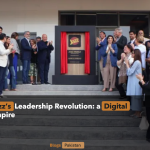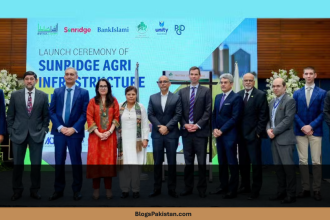Punjab is charging full steam ahead into a new era of transportation, with plans to revolutionize how millions commute, travel, and connect across the province. The recent approval of a bullet train linking Lahore and Rawalpindi marks a transformative leap, signaling Punjab’s commitment to cutting-edge infrastructure and sustainable urban development. Let’s unpack the details of this ambitious project and explore how it aligns with broader upgrades to the region’s transit network.
The Lahore-Rawalpindi Bullet Train: Redefining Inter-City Travel
Chief Minister Maryam Nawaz Sharif’s greenlighting of Punjab’s first bullet train has set the stage for a transportation milestone. This high-speed rail corridor aims to connect two of the province’s most bustling cities—Lahore, the cultural heartbeat, and Rawalpindi, a key administrative and commercial hub. Currently, the 280-kilometer journey between these cities takes roughly 4–5 hours by road or conventional train. The bullet train, however, promises to slash this duration to a mere 2.5 hours, making day trips and business travel seamless.
The project is still in its early stages, with in-principle approval granted during a high-level meeting chaired by the Chief Minister. Authorities are exploring hybrid operational models, including collaborations between Pakistan Railways and private-sector investors. This public-private partnership (PPP) approach could accelerate funding, expertise sharing, and timely execution. Senior Minister Marriyum Aurangzeb has been appointed to spearhead coordination efforts, ensuring alignment with federal stakeholders.
Beyond Lahore-Rawalpindi: Expanding High-Speed Rail Networks
While the Lahore-Rawalpindi route is grabbing headlines, Punjab’s vision extends far beyond this corridor. The government has identified multiple routes ripe for high-speed rail upgrades, targeting both urban and semi-urban regions:
- Lahore to Shahdara/Narowal: Enhancing connectivity to Punjab’s northern districts.
- Lahore to Raiwind/Kasur: Streamlining access to industrial zones and religious sites.
- Pakpattan to Lodhran: Bridging agricultural centers with urban markets.
These routes aim to reduce traffic congestion on highways, lower carbon emissions, and stimulate economic activity in smaller cities. To fast-track implementation, Chief Minister Maryam Nawaz has directed authorities to complete feasibility studies by May/June 2024. These studies will assess technical viability, environmental impacts, and cost-benefit analyses.
Modernizing Urban Transit: Yellow Line, E-Taxis, and Gujranwala Metro
Punjab’s transport overhaul isn’t limited to inter-city rail. Major cities are set to benefit from localized upgrades designed to ease daily commutes:
Lahore Yellow Line Metro
The Yellow Line, part of Lahore’s expanding metro network, will connect densely populated areas like Township to Liberty Market. With dedicated lanes and eco-friendly buses, this project aims to decongest roads and offer affordable, reliable transit.
Gujranwala Mass Transit System
Gujranwala, a rapidly growing industrial city, will soon debut its first mass transit system. This initiative includes electric buses and smart fare systems tailored to serve factory workers, students, and residents.
E-Taxi Service Launch
An electric taxi fleet is also in the works, offering app-based bookings and competitive fares. This service targets urban professionals and tourists, reducing reliance on fuel-guzzling rideshares.
Economic Ripple Effects: Jobs, Tourism, and Trade
The bullet train and allied projects are poised to deliver far-reaching economic benefits:
- Job Creation: Construction, engineering, and operations will generate thousands of jobs.
- Tourism Boost: Faster travel could increase visitor numbers to heritage sites like Lahore Fort and Katas Raj Temples.
- Trade Efficiency: Quicker cargo movement between Rawalpindi’s markets and Lahore’s export hubs will benefit SMEs.
Local businesses near proposed stations are already anticipating a surge in foot traffic, with entrepreneurs exploring opportunities in hospitality, retail, and logistics.
Challenges on the Track: Funding, Logistics, and Public Buy-In
While the vision is bold, hurdles remain. Securing international financing for high-speed rail—a capital-intensive endeavor—will require strategic negotiations with global lenders. Land acquisition for new tracks could also face delays, given Punjab’s densely populated terrain.
Public perception is another critical factor. Past infrastructure projects in Pakistan have struggled with inconsistent service quality. To build trust, officials must prioritize transparency during the planning phase and ensure timelines are met.
The Road Ahead: A Timeline for Transformation
Punjab’s government has set an aggressive schedule to turn these blueprints into reality:
- May 2024: Feasibility reports for Lahore-Rawalpindi bullet train due.
- June 2024: Studies for secondary high-speed routes to be finalized.
- 2025: Expected groundbreaking on priority projects.
As deadlines approach, all eyes will be on execution—can Punjab replicate the success of global high-speed rail models while adapting to local needs? The answer could reshape South Asia’s transportation landscape.
Sustainable Travel: Aligning With Global Climate Goals
Electric trains, solar-powered stations, and energy-efficient metros underscore Punjab’s focus on green mobility. By shifting passengers from cars and buses to rail, the province could significantly lower its transport-related carbon footprint—a win for both commuters and the environment.
From cutting-edge bullet trains to tech-driven taxis, Punjab is scripting a new chapter in its infrastructure story—one that prioritizes speed, sustainability, and accessibility for all.










